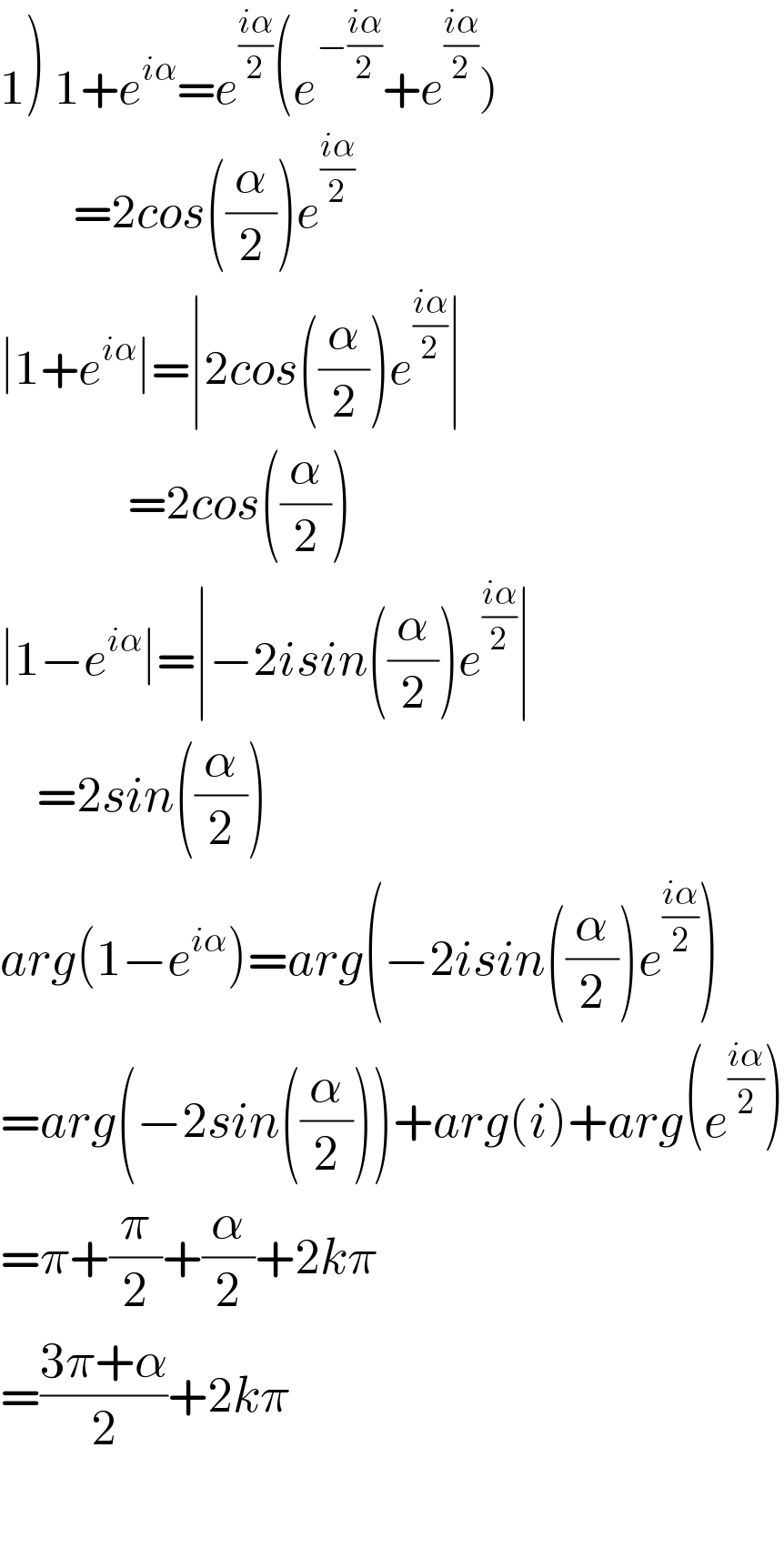
Question and Answers Forum
Question Number 81954 by Cmr 237 last updated on 16/Feb/20
![soit α∈]0;π[. determiner: 1)le module et l′argument de: a)1−e^(iα) ,b)1+e^(i𝛂) 2)deduire le module et l′argument de a) ((1−e^(iα) )/(1+e^(iα) )), b)(1−e^(iα) )(1+e^(iα) ) rochinel930@gmail.c](Q81954.png)
Commented by abdomathmax last updated on 16/Feb/20
![z=1−e^(iα) =1−cosα−isinα =2sin^2 ((α/2))−2isin((α/2))cos((α/2)) =2sin((α/2))(sin((α/2))−icos((α/2))) 0<(α/2)<(π/2) ⇒sin((α/2))>0 ⇒z=2sin((α/2)){cos((π/2)−(α/2))−isin((π/2)−(α/2))} =2sin((α/2)){cos(((α−π)/2))+isin(((α−π)/2))} ⇒ ∣z∣=2sin((α/2)) and arg(z)=((α−π)/2) [2π]](Q81955.png)
Commented by abdomathmax last updated on 16/Feb/20
![Z=1+e^(iα) ⇒Z=1+cosα +isinα =2cos^2 ((α/2))+2isin((α/2))cos((α/2)) =2cos((α/2)){cos((α/2))+isin((α/2))} cos((α/2))>0 due to 0<α<π ⇒∣Z∣=2cos((α/2))and argZ=(α/2)[2π]](Q81956.png)
Commented by abdomathmax last updated on 16/Feb/20
![∣((1−e^(iα) )/(1+e^(iα) ))∣ =((∣1−e^(iα) ∣)/(∣1+e^(iα) ∣)) =((2sin((α/2)))/(2cos((α/2))))=tan((α/2)) and arg(((1−e^(iα) )/(1+e^(iα) )))=arg(1−e^(iα) )−arg(1+e^(iα) ) [2π] =((α−π)/2)−(α/2)[2π] =−(π/2)[2π]](Q81957.png)
Commented by abdomathmax last updated on 16/Feb/20
![∣(1−e^(iα) )(1+e^(iα) )∣=2sin((α/2))×2cos((α/2)) =2sin(α) and arg{(1−e^(iα) )(1+e^(iα) )} =arg(1−e^(iα) ) +arg(1+e^(iα) )[2π] =((α−π)/2) +(α/2) [2π] =α−(π/2)](Q81958.png)
Commented by Cmr 237 last updated on 16/Feb/20

Commented by mathmax by abdo last updated on 16/Feb/20
![((3π+α)/2) +2kπ =2π−(π/2)+(α/2) +2kπ =((α−π)/2)[2π]](Q81961.png)
